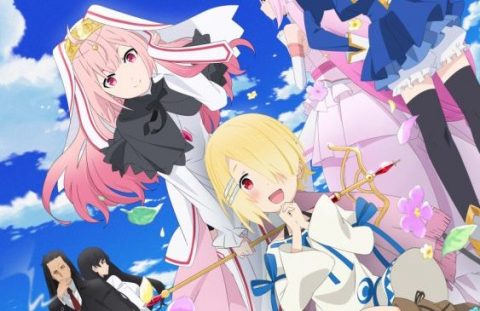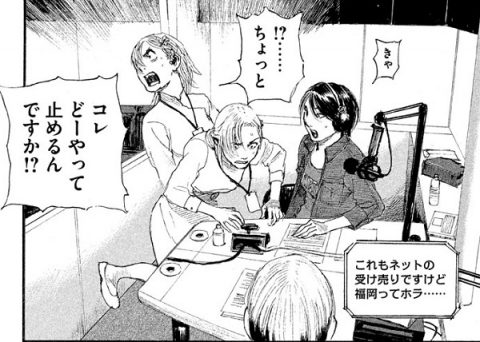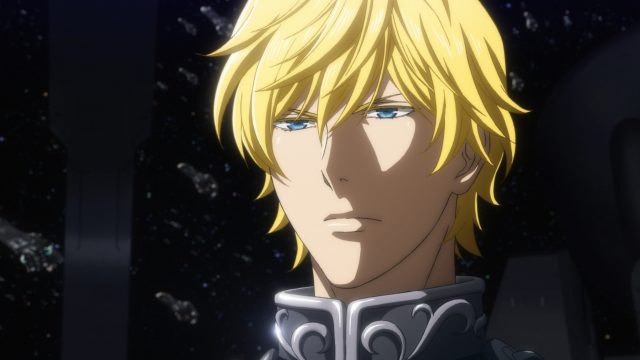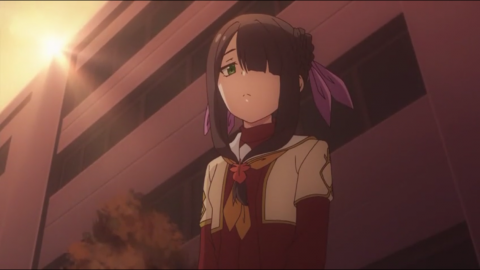A huge number of games appear in the arcade love comedy "High Score Girl," which is set in a 90s game center. I've chosen 10 games based on my own personal opinion, including games that play an important role in the story, classic games that still stand the test of time, and my personal favorites!
Masterpiece No. 1: Street Fighter II
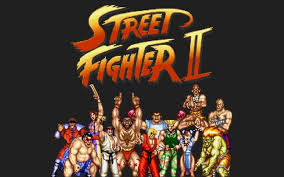
Source: High Score Girl © Rensuke Oshikiri/SQUARE ENIX・High Score Girl Production Committee
Overview of the Work
This fighting game was released as an arcade game by Capcom Co., Ltd. in 1991, and became an explosive hit that sparked the fighting game boom. It established the basic system that could be said to be the template for fighting games that came later, and it was a work that revolutionized the gaming industry at the time.
About the work
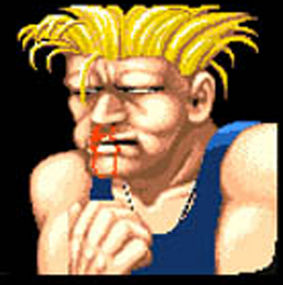
Source: High Score Girl © Rensuke Oshikiri/SQUARE ENIX・High Score Girl Production Committee
Choose one of the eight characters and fight. The characters you don't choose will appear as enemies. The six buttons are assigned to weak, medium, and strong punches and weak, medium, and strong kicks, and you can guard by pushing the lever in the opposite direction. This is a work that allows you to enjoy deep battles with a variety of actions and tactics. In addition to being an explosive hit, it has been adapted into numerous ports, sequels, anime and movies, and other media mix developments. The graphics of the defeated face are comical.
Position in High Score Girl
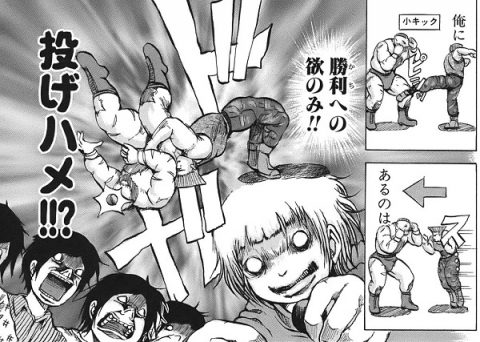
Source: High Score Girl ©Rensuke Oshikiri/SQUARE ENIX/High Score Girl Production Committee
This work, which is said to be the beginning of the fighting game boom, is also the first work in High Score Girl. The main character, Yaguchi Haruo, who has no redeeming qualities other than playing games, breaks the pride of the heroine, Ohno Akira, who has won 28 games in a row using the weakest character, Zangief, and in order to protect his pride, he uses illegal techniques such as ``Waiting Guile'' and ``Throwing Hame'' to get into a real fight. The main character, Haruo, grows as the Street Fighter II series appears one after another.
Masterpiece No. 2: Splatterhouse
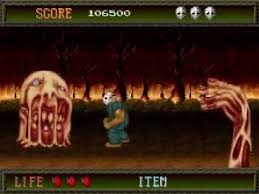
Source: High Score Girl © Rensuke Oshikiri/SQUARE ENIX・High Score Girl Production Committee
Overview of the Work
A side-scrolling action game released as an arcade game by Namco Co., Ltd. in 1988. The game sees the protagonist Rick enter a mansion infested with monsters to save his captured girlfriend Jennifer and defeat the enemies. Influenced by the horror and splatter movies that were popular at the time, the film is characterised by its cruel and grotesque depictions.
Synopsis
The protagonist, Rick, was just a college student, but by donning the legendary mask "Hellmask", he borrowed the power of spirits and gained superhuman physical abilities and an appearance just like Jason. As he makes his way through the mansion, mowing down monsters, Rick finally reunites with his girlfriend, Jennifer.
However, when Rick rushed over, it seems that something had already been done
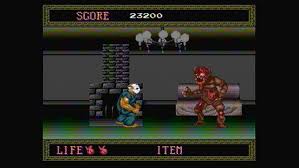
Source: High Score Girl © Rensuke Oshikiri/SQUARE ENIX・High Score Girl Production Committee
Jennifer has turned into a monster. The monster Jennifer attacks Rick. After killing Jennifer, Rick goes to the heart of the mansion and ends everything, but as he leaves the mansion, the final boss "Hell Chaos" appears. Hell Chaos is the form of the masked spirit that lent Rick his power, residing in a monster underground. The masked spirit was using Rick to revive himself.
Position in High Score Girl
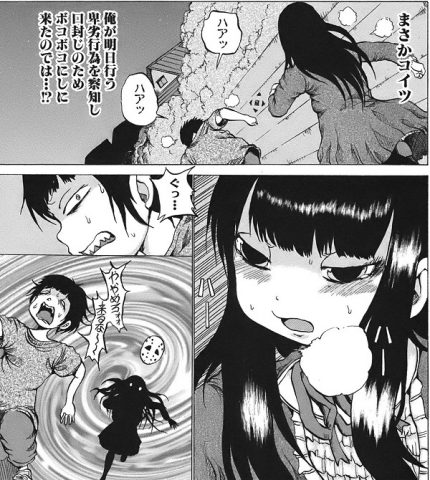
Source: High Score Girl ©Rensuke Oshikiri/SQUARE ENIX・High Score Girl Production Committee
In the elementary school version, Haruo initially hated Ohno for invading his sanctuary. He poured those feelings out into "Splatterhouse." Ohno was watching from behind and when Haruo tried to leave, he relentlessly chased after him.
Actually, he just didn't like horror
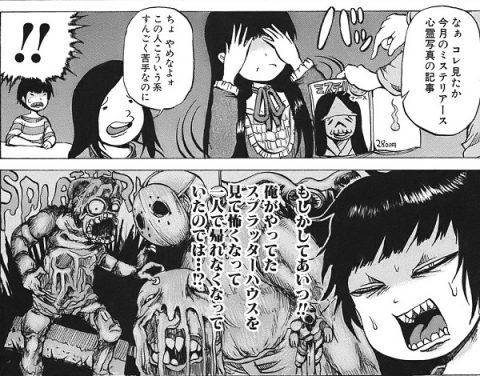
Source: High Score Girl © Rensuke Oshikiri/SQUARE ENIX・High Score Girl Production Committee
Haruo was planning to expose Ohno for spending all his time at the arcade, and he thought he was being chased to stop him, but in fact he was just scared to go home alone after watching Splatterhouse.
Masterpiece #3: Final Fight
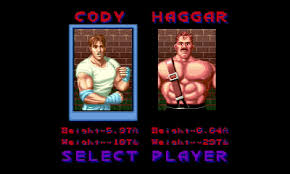
Source: High Score Girl © Rensuke Oshikiri/SQUARE ENIX・High Score Girl Production Committee
Overview of the Work
A belt-scrolling action game released as an arcade game by Capcom Co., Ltd. in 1989. This work raised awareness of belt-scrolling action games, and many of the characters that appear have participated in Street Fighter series titles.
About the film
Metro City, a city rife with violence and death, is led by Mike Haggar, mayor of the city, who launches a full-scale attack on Mad Gear, Metro City's biggest crime organization. As a result, Haggar's daughter Jessica is kidnapped in retaliation. Mayor Haggar, a former professional wrestler, Jessica's boyfriend Cody, and Cody's friend Guy take on Mad Gear to rescue Jessica.
Cody's turbulent life
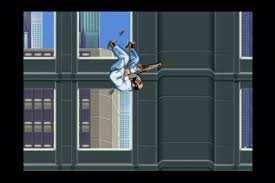
Source: High Score Girl © Rensuke Oshikiri/SQUARE ENIX・High Score Girl Production Committee
Metro City becomes peaceful after the last boss Berger is pushed off the building, and the story ends happily, but one of the characters in Final Fight, "Cody," is unable to adapt to the peaceful town and spends his time engaging in violence, eventually committing an assault and being arrested, leading to a turbulent life. In fact, he also appears in the latest Street Fighter series, where you can see his shocking end.
Position in High Score Girl
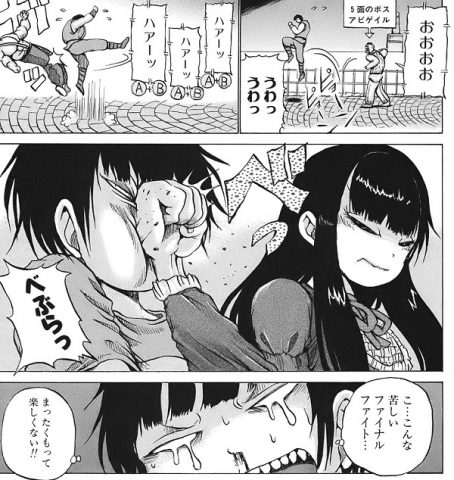
Source: High Score Girl © Rensuke Oshikiri/SQUARE ENIX・High Score Girl Production Committee
In the elementary school version, Ohno is playing at a candy store arcade and struggling, and Haruo barges in thinking he's doing him a favor, but he shows a demonic look in response. In fact, Ohno wasn't struggling, but rather pushed himself into a corner and aimed for a high score. After that, whenever Haruo tried to trip him up, he responded with violence, but in the end he pushed Berger off the building and got a high score.
A work that Ohno has a special attachment to
After that, the two of them went to an amusement park, but found the only place they could stay was the arcade, and they also played together when Haruo was kidnapped by Ohno. Perhaps because it was a game that Ohno played with Haruo, it is a work that Ohno has a special attachment to and is one of his favorites.
Masterpiece #4 Sweet Home
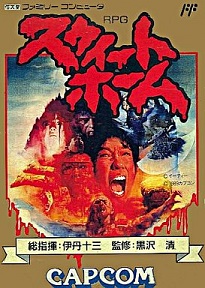
Source: High Score Girl © Rensuke Oshikiri/SQUARE ENIX・High Score Girl Production Committee
This is a role-playing game released in 1989 for the Family Computer by Capcom Co., Ltd. It is a game version of the horror film Sweet Home directed by Juzo Itami, but as an RPG, it incorporates innovative systems that incite fear, such as character loss and restrictions on recovery items.
About the work
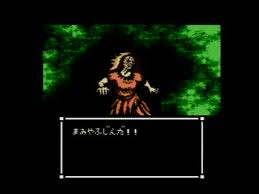
Source: High Score Girl © Rensuke Oshikiri/SQUARE ENIX・High Score Girl Production Committee
This work is a 1989 Famicom work, and some people may think that there is a limit to how much fear can be aroused, but the way it arouses fear and panic that is unique to RPGs makes it much scarier than a bad horror work, so don't underestimate it just because it's a Famicom software. Mrs. Mamiya will seriously appear in your dreams.
A unique system exists
The five characters that appear, Kazuo, Akiko, Emi, Asuka, and Taguchi, are not particularly friendly and do not like to act in groups of more than four, so you will basically progress in parties of three and two.
If you can't help a friend in trouble...
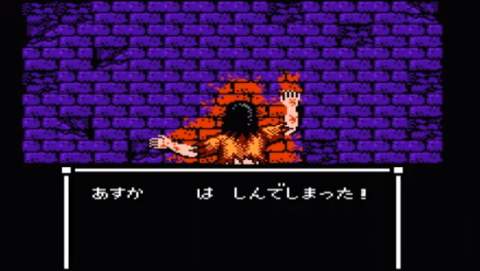
Source: High Score Girl © Rensuke Oshikiri/SQUARE ENIX・High Score Girl Production Committee
In addition to being able to call your allies during battle to join up with them, there are traps set up all over the Mamiya residence, so if someone falls into a trap, another character who can act must go and help them. If you don't help them, they will die and won't appear again after the traumatic death scene.
Multiple Ending System
The endings in the multiple ending system are determined by the number of survivors, and the ending where five people survive will have a shocking finale typical of horror games.
Position in High Score Girl
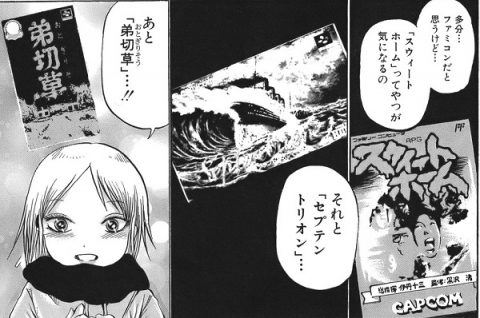
Source: High Score Girl © Rensuke Oshikiri/SQUARE ENIX・High Score Girl Production Committee
Koharu, who has become a little interested in games due to Haruo's influence, chose this game as one she wanted to play (strictly speaking, she wanted Haruo to play it and she wanted to watch next to him). This game is bad for your heart to play alone in a dark room, so it's a game you'd want to play with Haruo.
Masterpiece #5: Septentrion

Source: High Score Girl © Rensuke Oshikiri/SQUARE ENIX・High Score Girl Production Committee
This is a 2D action adventure game released in 1993 by Human Co., Ltd. for the Super Famicom. The game involves escaping from a situation where the luxury cruise ship Lady Crysania has capsized and is on the verge of sinking after a shipwreck. If you do not escape within 60 minutes of real time, the game is over.
Contents
The objective is to escape from a sinking luxury cruise ship, but if the protagonist escapes alone it will result in a bad ending, and to see the good ending, the protagonist must help the stranded passengers and escape together.
The ending changes depending on which passengers you save
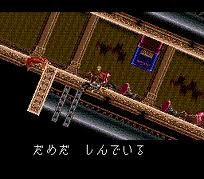
Source: High Score Girl © Rensuke Oshikiri/SQUARE ENIX・High Score Girl Production Committee
Each passenger you save is given a score, and the total score you get when you clear the game determines the ending. Also, the protagonist is assigned a key person, and the ending changes depending on whether or not you rescue the key person.
Septentrion - luck plays a part in escaping
The sinking ship can tilt randomly, and depending on the tilt, it can open up previously inaccessible areas, but if you fall at the wrong time, you can fall from a high place. If an NPC falls from a high place, they will naturally die instantly, but the main character will only feel pain. There is no PS version. It's not even in the archives.
Position in High Score Girl

Source: High Score Girl © Rensuke Oshikiri/SQUARE ENIX・High Score Girl Production Committee
Like Sweet Home, this is a game that Koharu is interested in. It's a game that incites panic, so Ohno probably doesn't like it.
Masterpiece #6: Chrono Trigger
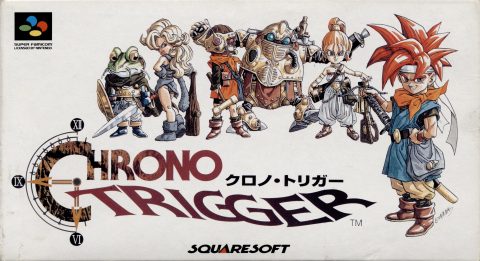
Source: High Score Girl © Rensuke Oshikiri/SQUARE ENIX・High Score Girl Production Committee
Overview of the Work
This is a role-playing game released by Square Co., Ltd. in 1995 for the Super Famicom. Square and Enix, the two biggest RPGs at the time, teamed up to develop this game as a dream project that brought together Hironobu Sakaguchi of Final Fantasy, Yuji Horii of Dragon Quest, and Akira Toriyama of Dragon Ball. This game was born from extremely high expectations and became a masterpiece that will remain in the history of games.
Contents
The protagonist, Chrono, meets a blonde girl named Marle at the Millennium Festival, and the two of them travel around the festival together. There, Marle disappears into a teleportation device invented by his childhood friend Lucca. Chrono chases after Marle using the teleportation device, but the place he is transported to is the past world.
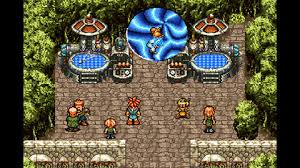
Source: High Score Girl © Rensuke Oshikiri/SQUARE ENIX・High Score Girl Production Committee
A story where the past, present, and future intersect
While solving the disasters that befall them, Chrono and his friends arrive at a distant future, where they learn that the future has been destroyed by "Lavos." They decide to travel through time to the past, present, and future to save the world. The character design, music, story, and everything else are all of a high standard, and the work is still popular today.
Innovative systems
Although the story is a classic one, innovative systems are used throughout. For example, multiple endings are used, and the ending changes depending on when you defeat the final boss. It also uses a strong new game system, and although the term strong new game is still used today, it was first used in Chrono Trigger.
There are also mini-games that are not very related to the story
There are many mini-games in the Millennium Festival, and even if you clear them, they do not have much to do with the story, but you can get a life-sized doll to display in your room.
Position in High Score Girl

Source: High Score Girl © Rensuke Oshikiri/SQUARE ENIX・High Score Girl Production Committee
This is the game that Haruo played when he was cheating on his home game console after failing his entrance exam. He was trying to make a game like Chrono Trigger with RPG Maker, but it was too difficult.
Masterpiece #7 Vampire Hunter
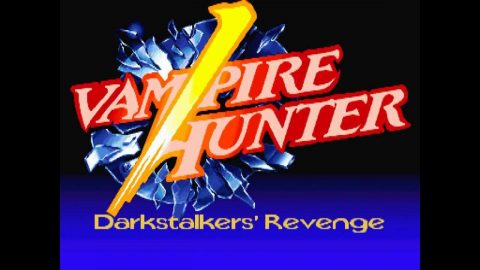
Source: High Score Girl © Rensuke Oshikiri/SQUARE ENIX・High Score Girl Production Committee
Overview of the Work
This is an upgraded version of the fighting game "Vampire," which was released as an arcade game by Capcom Co., Ltd. in 1994. New characters Lei Lei and Donovan, as well as boss characters Pyron and Phobos are available for use. The characters that appear are legendary beings such as vampires, succubi, and werewolves.
Contents
The distinctive system of the Vampire series is the "Chain Combo" system, which allows for highly flexible combos, and the "Guard Cancel" system, which allows you to counter even while guarding. These are systems unique to Vampire, and many recent fighting games incorporate similar systems.
Position in High Score Girl
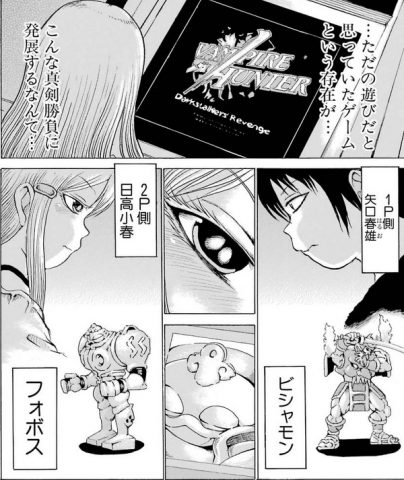
Source: High Score Girl © Rensuke Oshikiri/SQUARE ENIX・High Score Girl Production Committee
As a fighting game following the Street Fighter series, Haruo was also eagerly awaiting its release date. However, in the subsequent Hunter games, he had been away from arcades for a while, so he was helpless against Koharu, who he considered inferior. However, the final battle of the three-game series with Koharu was a Vampire Hunter match, with a fierce battle between Bishamon and Phobos unfolding.
Masterpiece #8 RPG Maker
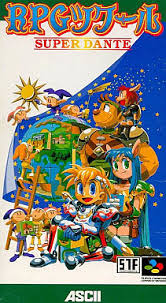
Source: High Score Girl © Rensuke Oshikiri/SQUARE ENIX・High Score Girl Production Committee
Overview of the Work
This is an RPG production software released by ASCII Corporation in 1995 as a game software for the Super Famicom. It is a port of the PC98 "RPG Maker Dante98" and allows you to create your own games.
Contents of the work
Even now, many years after the release of the original RPG Maker, new RPG Makers continue to be released. In fact, with the spread of the Internet, it has become easier to publish works, so many RPGs made with RPG Maker have been released, and it can be said that RPG production with RPG Maker is currently in a state of overdrive. Famous titles include "Ao Oni", "Nobita's BIOHAZARD", "Histoire", "Nepheciel", etc.
Position in High Score Girl
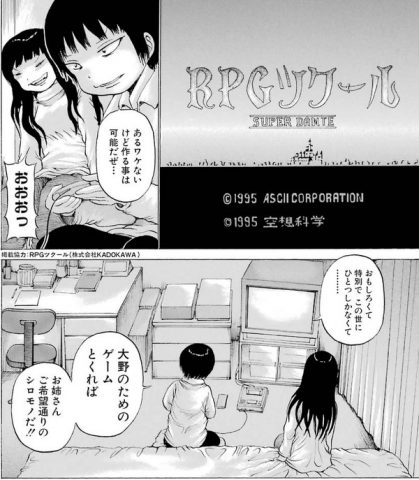
Source: High Score Girl ©Oshikiri Rensuke/SQUARE ENIX・High Score Girl Production Committee
When Haruo found out from Ohno's sister, Ohno Makoto, that Ohno was receiving a special education that didn't even allow him to go outside, he used RPG Maker to create an RPG for Ohno.
The trigger for a change in the Ohno family's educational policy
However, when he was found out by his mentor, Gakida Moemi, and was dismissed without question, Ohno rejected Moemi more than ever before, which prompted Moemi to reconsider her own educational policy.
Masterpiece #9 Tokimeki Memorial
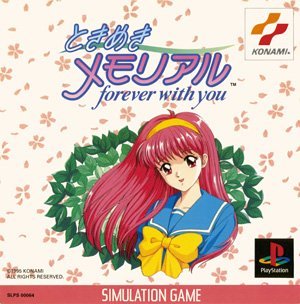
Source: High Score Girl © Rensuke Oshikiri/SQUARE ENIX・High Score Girl Production Committee
This is a love simulation game that was released by Konami Co., Ltd. in 1994. The PS and Super Famicom versions are famous, but it actually first appeared on the PC Engine. It was a huge hit at a time when the PC Engine market itself was at its end, and production volume was low, making it a premium item. The PS version had improved interface and other aspects, and it was a work that established the romance simulation genre.
Game Contents
The goal of the game is to increase your stats, get to know girls, go on dates with them, and finally have the girl of your dreams confess her feelings to you.
Main heroine and final boss "Fujisaki Shiori"
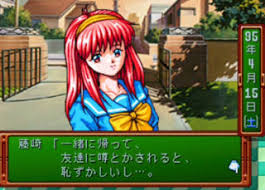
Source: High Score Girl © Rensuke Oshikiri/SQUARE ENIX・High Score Girl Production Committee
However, the main heroine "Fujisaki Shiori" depicted on the package is actually the final boss. Fujisaki Shiori is a perfect superhuman, so her ideals are very high, and you need very high parameters to be treated properly. Even though she is the childhood friend of the protagonist, she is well known for her harsh words, "If we go home together, it would be embarrassing if your friends start talking about you..."
Love simulation bomb defusing game
If you were to sum up the original Tokimeki Memorial in one sentence, it would be a "bomb defusing game" in which if you are a people pleaser to many girls, a bomb will be attached to the girl. For example, if you refuse to go home together, of course a bomb will be attached. However, if you go home together, multiple girls who will have been watching from afar will be bombed.
If it explodes, it's all over!!
The player must go all out to defuse the bomb. When the bomb explodes, the favorability rating of all the girls will drop. Rumors about the girls who have been hurt seem to spread to the entire school in an instant. Women are scary... If it gets to this point, it's hopeless for anyone to confess their feelings... In that case, make a bunch of prank calls to get revenge.
Position in High Score Girl
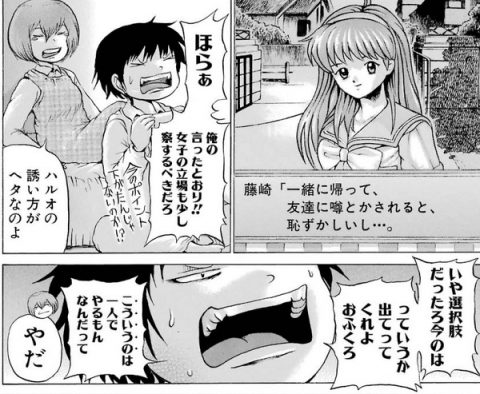
Source: High Score Girl © Rensuke Oshikiri/SQUARE ENIX・High Score Girl Production Committee
A game that Ohno's sister forced Haruo to play in order to teach him about women's hearts. In Tokimeki Memorial, Haruo is also tormented by his gaming obsession, and his mother, Ohno's sister, and even Koharu all watch over him as he plays. As always, the game is covered in bombs, and Haruo ends up listening to "Poem of the Effeminate Bastards."
Masterpiece #10 Kaiser Knuckle
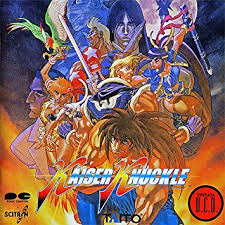
Source: High Score Girl © Rensuke Oshikiri/SQUARE ENIX・High Score Girl Production Committee
Overview of the Work
This is a fighting game that was released as an arcade game by Taito Corporation in 1994. It was released during the heyday of fighting games, but it didn't attract much attention. However, it was the existence of the strongest and worst final boss, General, that increased his popularity.
Work Content
The ultimate boss, General, is the strongest and worst in the history of fighting games, and the performance of the final boss, "General," has an incredible foul performance, and it also destroys most of his attacks, and is also a disadvantageous projectile that makes him seem so incredibly incredible that he has to fight with his energy. Although it is an incredible general, it is revealed that the general is actually nothing more than a vanguard.
Positioning as a high score girl
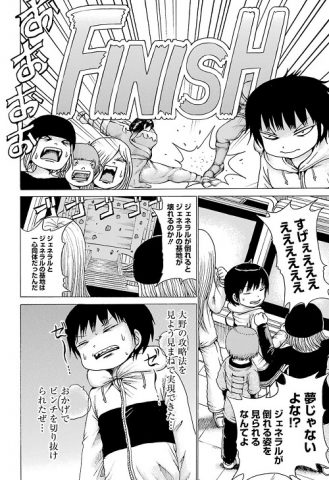
Source: High Score Girl ©Oshikiri Rensuke/SQUARE ENIX High Score Girl Production Committee
Haruo, who won the direct confrontation with Koharu, breaks Koharu's heart, and Haruo, who was disliked by the arcades at Mizonokuchi, is constantly being bullied and has nowhere to go, so he goes to Shibuya. Although he was involved with the Shibuya team who was taking on the general at a Shibuya arcade, he was accepted by the Shibuya team after winning by using a general technique that Ohno had previously discovered.
10 High Score Girl Masterpiece Games Summary
We've compiled a list of 10 works that have appeared in High Score Girl. What did you think? I think it's all interesting to play now! If you're interested, you should try your best to find a store where Kaiser Knuckle is in operation!

